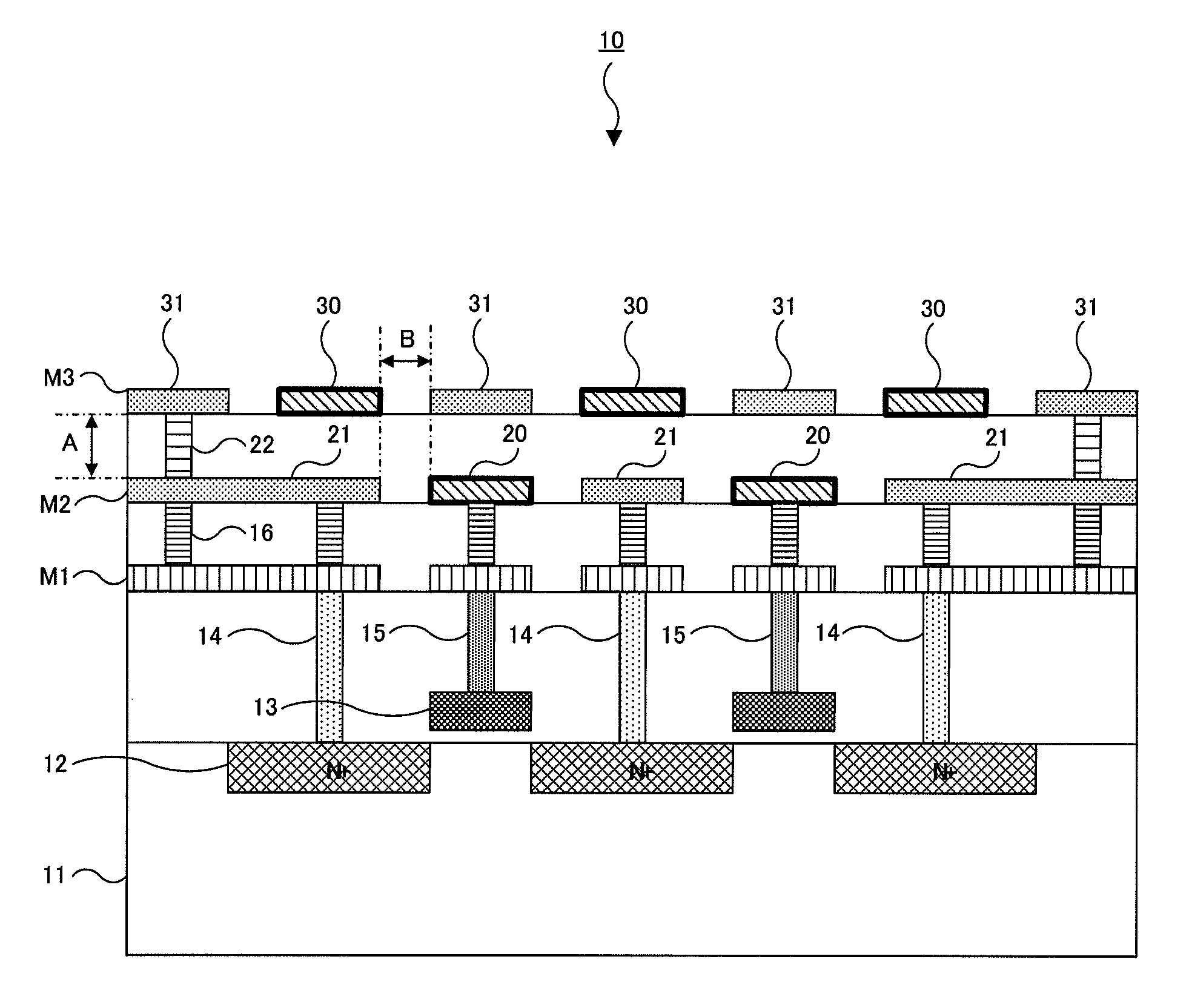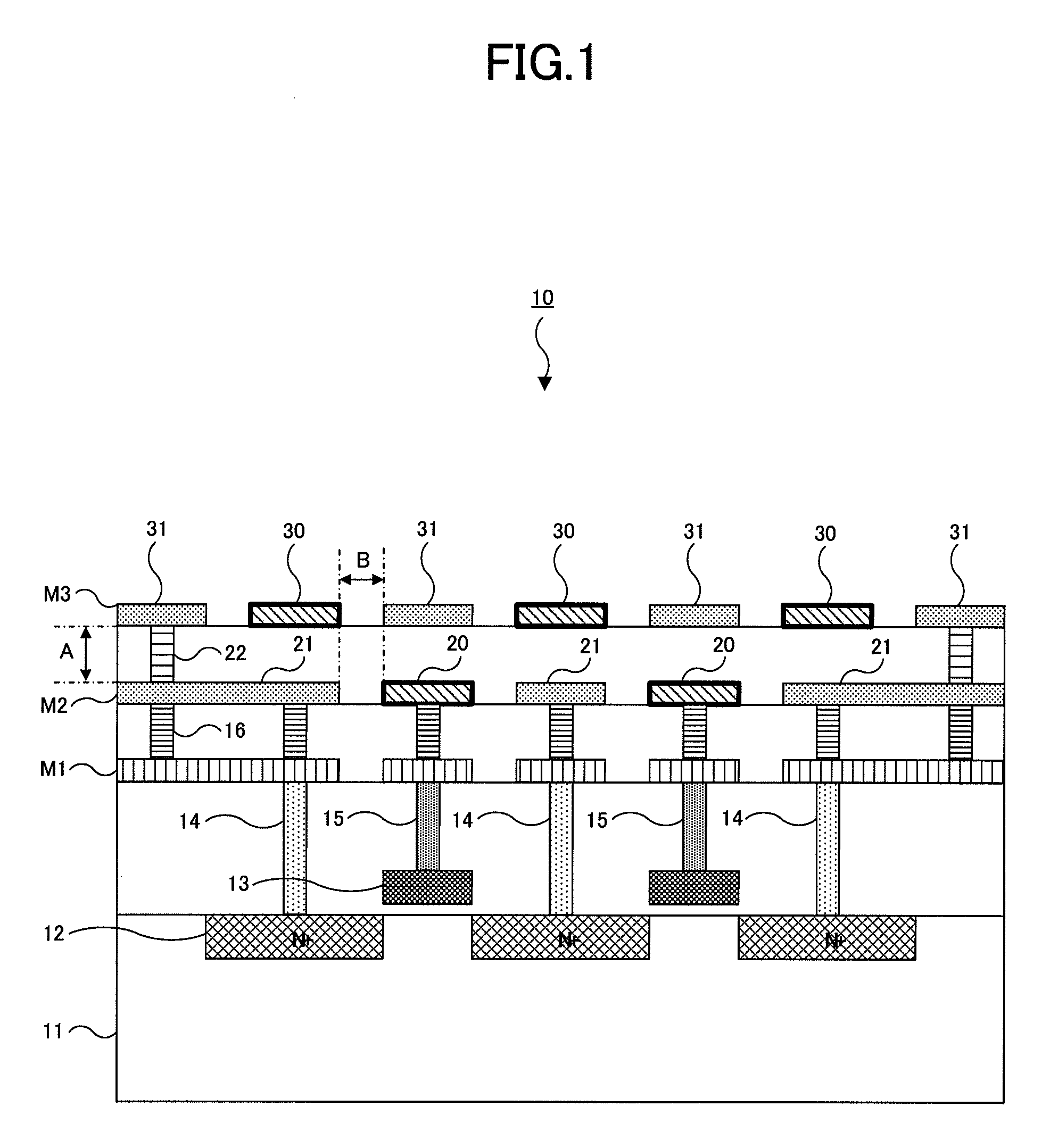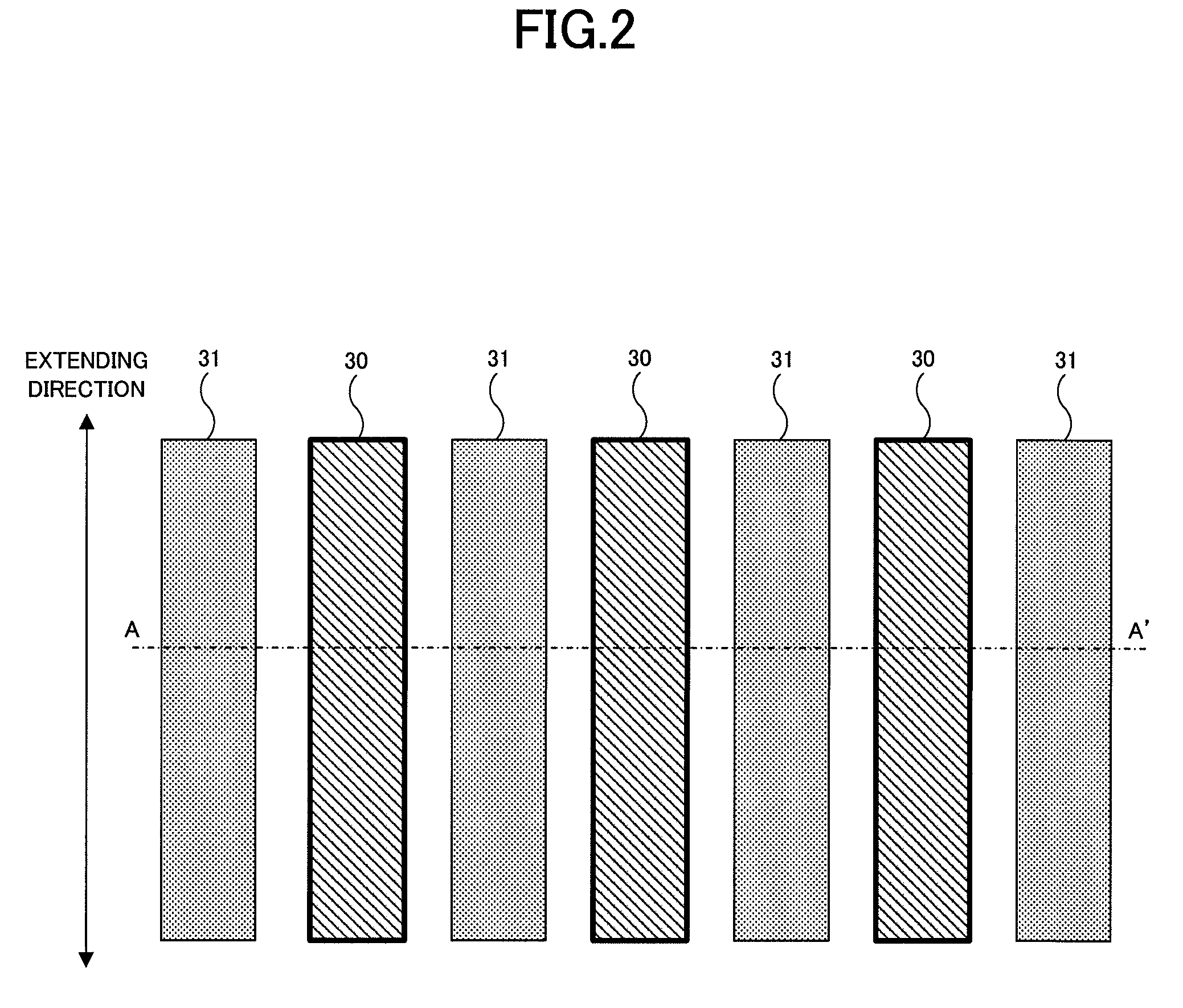Semiconductor device having shield structure
a shield structure and semiconductor technology, applied in the direction of electrical equipment, basic electric elements, waveguides, etc., can solve the problems of difficult structure of signal lines, high density, difficult to achieve effective, etc., to achieve reliably stabilize the potential of signal lines, reduce the chip size of the semiconductor device, and densely arrange the effect of the structur
- Summary
- Abstract
- Description
- Claims
- Application Information
AI Technical Summary
Benefits of technology
Problems solved by technology
Method used
Image
Examples
first embodiment
[0022]A semiconductor device of a first embodiment of the present invention will be described with reference to FIGS. 1 and 2. FIG. 1 shows a cross-sectional view of a semiconductor device 10 of the first embodiment. FIG. 2 is a plane view showing only an uppermost wiring layer M3 in the semiconductor device 10 of FIG. 1, and a cross section along A-A′ line in FIG. 2 corresponds to FIG. 1. In FIG. 2, respective lines are assumed to be arranged so as to extend in a direction of arrows.
[0023]As shown in FIG. 1, in the semiconductor device 10 of the first embodiment, N-type diffusion layers 12 are formed on a semiconductor substrate 11 made of P-type silicon. Gate electrodes 13 are formed over channels between the N-type diffusion layers 12. Gate insulating films are formed using silicon dioxide films (SiO2) between the gate electrodes 13 and the semiconductor substrate 11. Each N-type diffusion layer 12 and each gate electrodes 13 form a MOS structure in the semiconductor device 10.
[0...
second embodiment
[0038]Next, a semiconductor device of a second embodiment of the present invention will be described with reference to FIG. 5. FIG. 5 shows a cross-sectional view of the semiconductor device 10 of the second embodiment. In FIG. 5, elements common to those in the first embodiment are represented by the same numbers and description thereof will be omitted. The second embodiment differs from the first embodiment in that the lower wiring layer M2 is utilized for a purpose other than the signal lines 20 for the reference signal.
[0039]In FIG. 5, the signal line 20 for the reference signal is arranged at the right of two positions corresponding to the two signal lines 20 of the wiring layer M2 of FIG. 1, while a power supply line 23 for supplying a supply voltage VCC is arranged at the left of the two positions. This power supply line 23 is used to supply the supply voltage VCC to internal circuit elements of the semiconductor device 10. In addition, the three shield lines 21 formed in the...
third embodiment
[0043]Next, a semiconductor device of a third embodiment of the present invention will be described with reference to FIG. 6. FIG. 6 shows a cross-sectional view of the semiconductor device 10 of the third embodiment. In FIG. 6, elements common to those in the first embodiment are represented by the same numbers and description thereof will be omitted. The third embodiment differs from the first embodiment in terms of a structure of the semiconductor device 10. That is, the semiconductor device 10 of the third embodiment includes an N-type well 17 formed in the P-type substrate 11. The N-type well 17 is previously formed by adding N-type impurity such as phosphorus to an upper portion of the semiconductor substrate 11.
[0044]As shown in FIG. 6, the gate electrodes 13 are opposed to a surface of the lower semiconductor substrate 11 within a range where the N-type well 17 is formed. In this case, conductivity type of the semiconductor substrate 11 opposite to the gate electrodes 13 is ...
PUM
 Login to View More
Login to View More Abstract
Description
Claims
Application Information
 Login to View More
Login to View More - R&D
- Intellectual Property
- Life Sciences
- Materials
- Tech Scout
- Unparalleled Data Quality
- Higher Quality Content
- 60% Fewer Hallucinations
Browse by: Latest US Patents, China's latest patents, Technical Efficacy Thesaurus, Application Domain, Technology Topic, Popular Technical Reports.
© 2025 PatSnap. All rights reserved.Legal|Privacy policy|Modern Slavery Act Transparency Statement|Sitemap|About US| Contact US: help@patsnap.com



